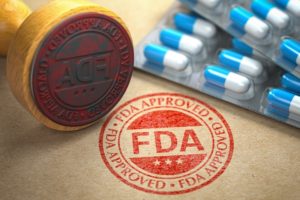 Many products in aesthetics and Longevity Medicine fall into the category of “off-label,” which is when a drug or device approved for a specific purpose is used for something else. It’s a common and perfectly legitimate practice, but often misunderstood.
Many products in aesthetics and Longevity Medicine fall into the category of “off-label,” which is when a drug or device approved for a specific purpose is used for something else. It’s a common and perfectly legitimate practice, but often misunderstood.
Take Botox for example; it was first approved in 1991 for treatment of muscle spasms around the eye causing strabismus or “lazy eye,” which remained its only on-label indication for more than a decade. It was apparent early on that there was an effect on wrinkles around the eye as well, and it became immensely popular for that. Today, many people don’t realize that Botox is used for anything else! Recently we have begun using a new product called Ariessence, which is FDA-approved to promote healing in orthopedics and oral surgery but off-label when injected for other purposes. Ariessence is purified platelet-derived growth factor (PDGF), one of the components of PRP (Platelet-Rich Plasma) but much more concentrated and doesn’t require a blood draw.
Why off-label is on-topic
The FDA approves drugs and devices for specific purposes (called indications) based on clinical studies, usually sponsored by the manufacturer. What the FDA does not regulate is the practice of medicine, so once something is approved, a licensed physician can prescribe it for another use based on their clinical judgment. If I want to use Botox for wrinkles in an area not specifically on-label, I am in the clear as long as it works and I stay out of trouble. But the manufacturer can only promote it for the on-label indication. Botox Cosmetic® was introduced only after Allergan saw the scale of the market for cosmetic use and invested millions in additional clinical trials. Same drug, different labeling.
It’s a similar story for a lot of drugs and medical devices. Minoxidil for example was developed as a drug for high blood pressure before the unanticipated side-effect of hair growth suggested a different use, and Rogaine was born. The inexpensive diabetes medication metformin is emerging as a strong candidate for anti-aging therapy, though you won’t see that anywhere on the label. (Ditto for GLP-1 blockers BTW.) Acellular dermal matrix products (e.g., Alloderm) were developed for burn reconstruction but didn’t pan out; fortunately a few innovative plastic surgeons (including me, insert pat on the back here) tried it off-label in breast surgery and it went on to revolutionize breast reconstruction and revision breast surgery. Yet despite a wealth of clinical research on the use of these products in breast surgery, the FDA asserts that they should not be marketed for that purpose because they are approved only for soft tissue support. As if the breast isn’t soft tissue!
Finding balance between innovation and regulation
It would be easy to dismiss this as regulatory static, but there are valid reasons for the process. Stem cell treatments sound sophisticated, but patients have been gravely harmed with inadequately tested procedures. Regulators point to these types of cases as reasons for more intensive oversight. But there are just as many examples of drugs and devices being repurposed to the benefit of patients and at lower cost than it would be to start from scratch. Often the issue is the lack of a sponsor ready to pony up the large expense of clinical trial for something already on the market. A lot of cutting edge stuff is in this category, from anti-aging peptides to breakthrough treatments that promise to eliminate scars. Done right, off-label is where progress is made. But it has to be done right.



